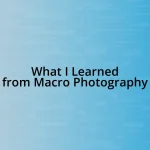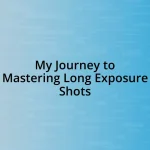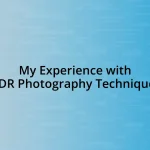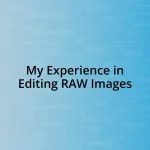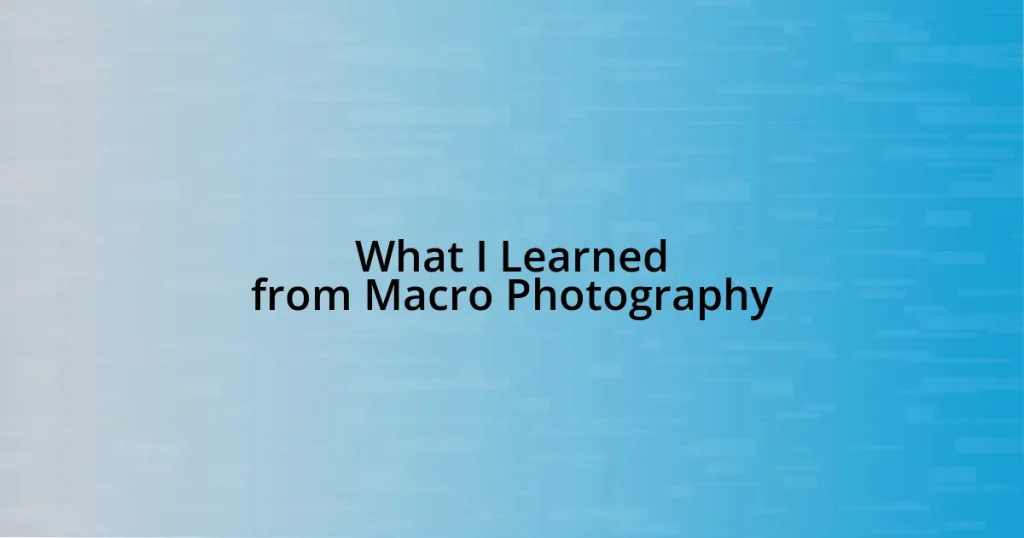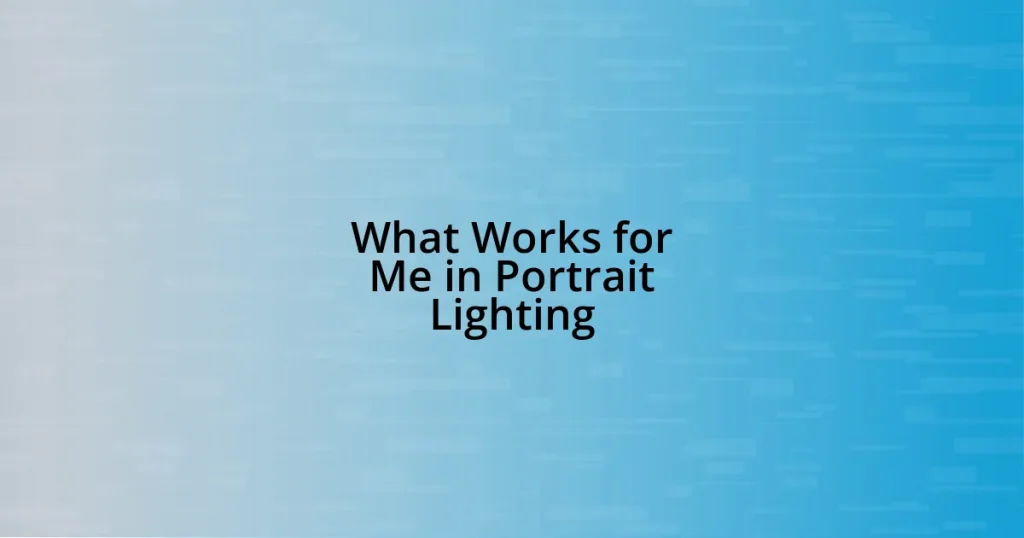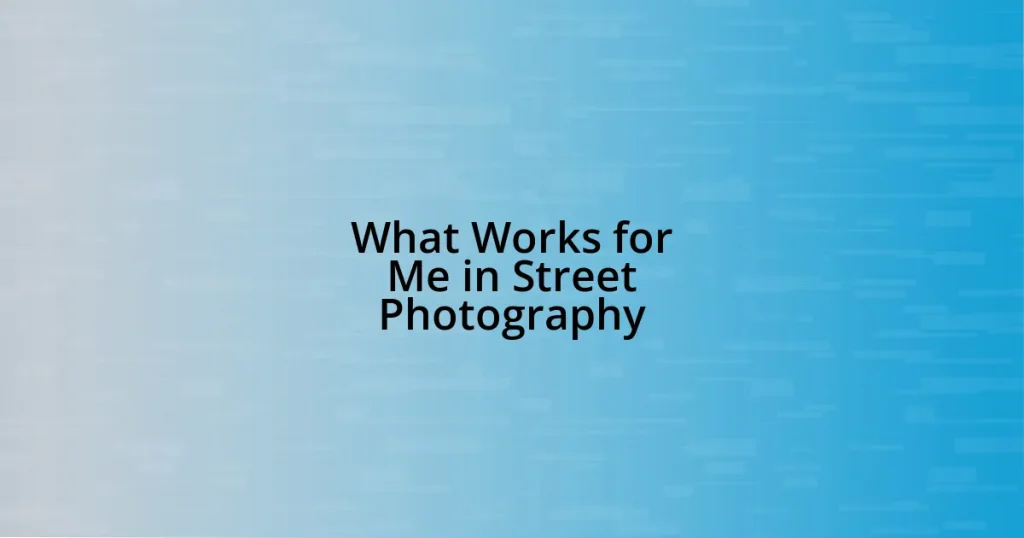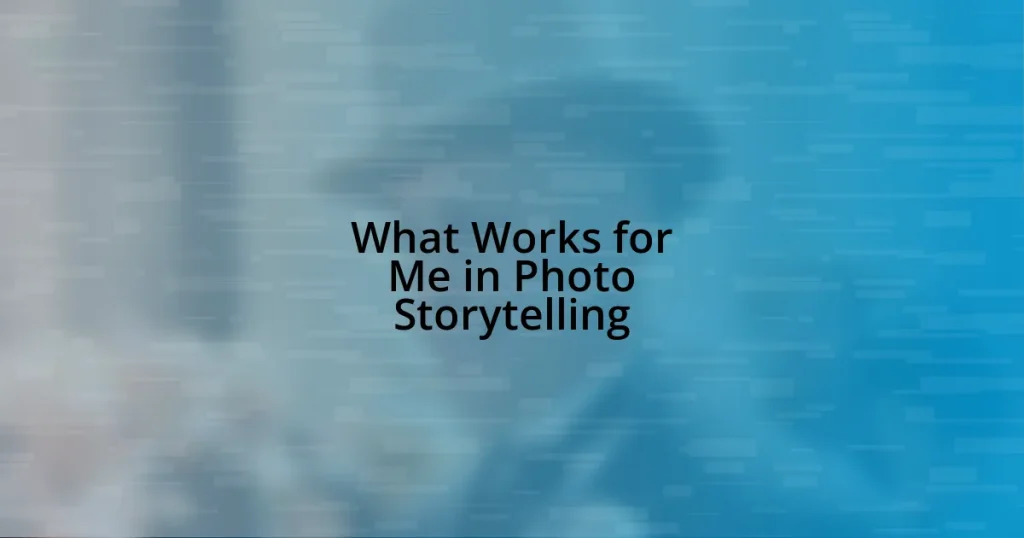Key takeaways:
- A dedicated macro lens and a sturdy tripod are essential for capturing fine details in macro photography.
- Experiment with lighting techniques, both natural and artificial, to enhance textures and colors.
- Focus on composition strategies like the rule of thirds, framing, and utilizing negative space to elevate images.
- Post-processing is crucial; adjustments in color, sharpness, and cropping can significantly enhance the final image’s impact.
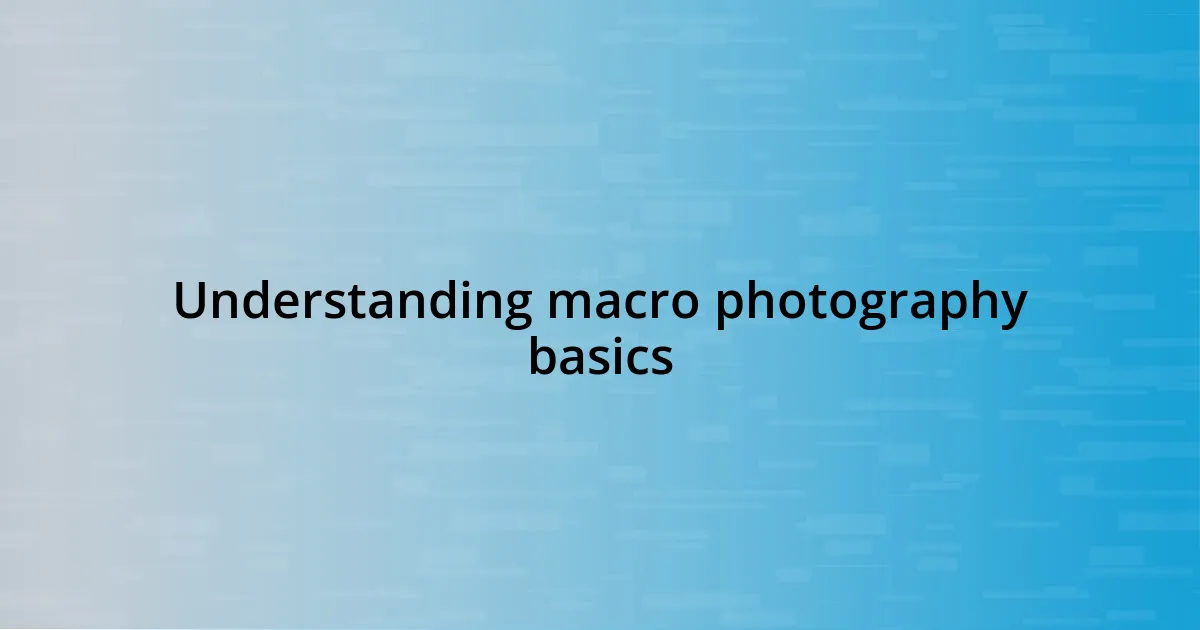
Understanding macro photography basics
When I first delved into macro photography, the incredible details of everyday objects fascinated me. I remember capturing a dew-covered spiderweb one early morning; the intricate patterns left me in awe. Understanding the basics, like the importance of using a dedicated macro lens or extension tubes, is crucial for anyone looking to unlock this intricate world.
I often emphasize the significance of lighting in macro photography. I learned that natural light can create stunning effects, but sometimes I prefer to experiment with external flashes or diffusers to achieve that perfect glow on tiny subjects. Have you ever noticed how light changes the mood of your images? It certainly transforms mine, bringing out colors and textures I never realized existed.
Focusing can be quite a challenge in macro photography due to the shallow depth of field. I still recall the half-dozen attempts I made to capture a butterfly perched on a flower—each shot out of focus, but with each misstep, I felt my excitement grow. By mastering techniques such as focus stacking and manual focus, I was able to enhance my precision and capture those fleeting moments accurately. Have you tried different focusing methods? It’s amazing how slight adjustments can yield dramatically different results.
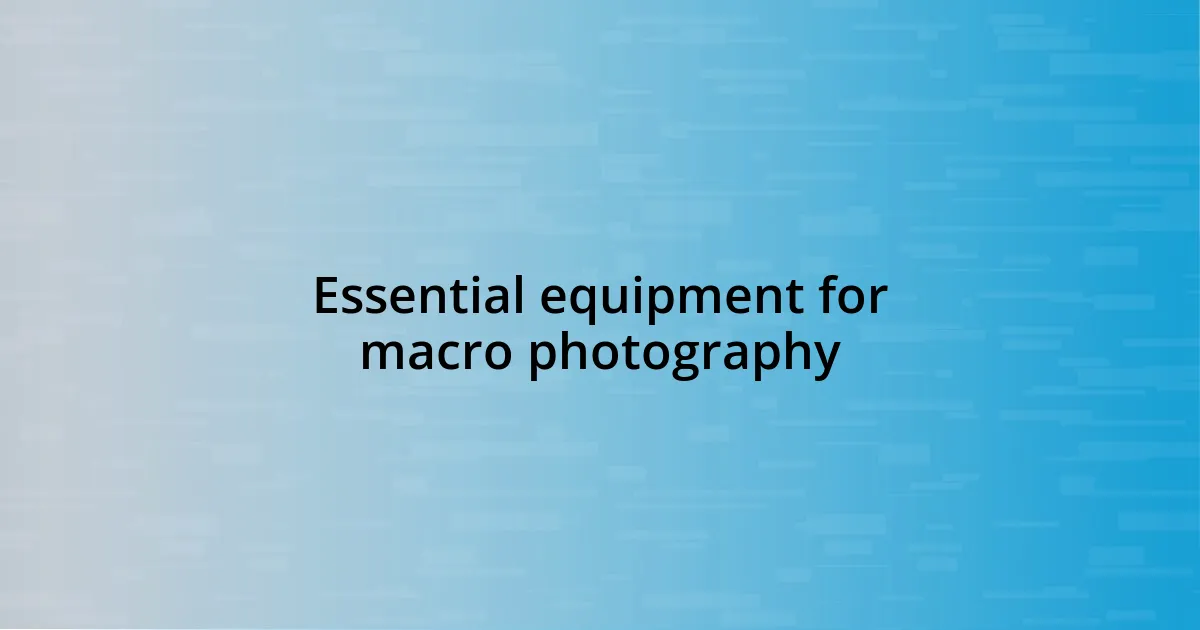
Essential equipment for macro photography
When it comes to macro photography, the right equipment makes a world of difference. I still remember the excitement I felt when I finally invested in a quality macro lens. The first time I used it, I captured the delicate hairs on a flower’s stem, and I was blown away by the clarity and detail that I could see. It taught me that a dedicated macro lens is essential for diving deep into a subject, allowing for the intimacy that macro photography demands.
Another piece of equipment that truly elevated my skills was a sturdy tripod. Initially, I underestimated its importance, thinking I could get by with handheld shots. However, during a particularly challenging session with ants in my garden, I quickly learned that stability is key when working with such tiny subjects. Using a tripod not only reduces shake but also allows for more deliberate framing and composition, which is so critical in capturing those fine details. Have you ever found yourself struggling with camera shake while trying to photograph something small? A tripod can be a game-changer.
Lastly, I can’t stress enough how beneficial lighting equipment can be. From the moment I started using ring lights, my macro images transformed. I recall one instance where I was shooting a small beetle on a leaf, and the added light highlighted its vibrant colors beautifully. The right light can enhance the texture and dimension in your shots, making the tiniest subjects really pop. What lighting techniques have you experimented with?
| Equipment | Description |
|---|---|
| Macro Lens | A specialized lens designed to capture small subjects in great detail. |
| Tripod | A stable support system to eliminate camera shake and assist in precise composition. |
| Lighting Equipment | Tools like ring lights or diffusers to enhance the quality and control of light. |

Techniques for capturing details
Capturing the intricate details in macro photography requires a blend of techniques that I’ve come to appreciate over time. One technique I personally rely on is getting down to the subject’s level. I remember laying on my stomach in the grass, focused on a tiny ladybug. This perspective change not only framed the shot beautifully but also revealed details I wouldn’t have seen from above. It’s an exhilarating experience to connect with your subject so closely, revealing a world that often goes unnoticed.
- Utilize natural light at various times of the day to see how it influences texture and color.
- Experiment with different angles; sometimes a shift in position can yield a completely new perspective on an object.
- Use the manual focus feature to gain better control over your composition and sharpness on specific details.
- Don’t shy away from getting creative with backgrounds; simplicity can enhance the subject you’re capturing.
Additional techniques revolve around patience and time. I vividly recall one afternoon spent waiting for a bee to land on a flower. It was a lesson in persistence. Each second felt like an eternity, but the moment finally arrived, and I was ready. This patience is pivotal. Breathe in the moment, and allow yourself to fully immerse in your surroundings. Each detailed shot reflects that dedication, revealing layers of beauty and nuance in the smallest corners of our world. Don’t rush; the details will come to you.
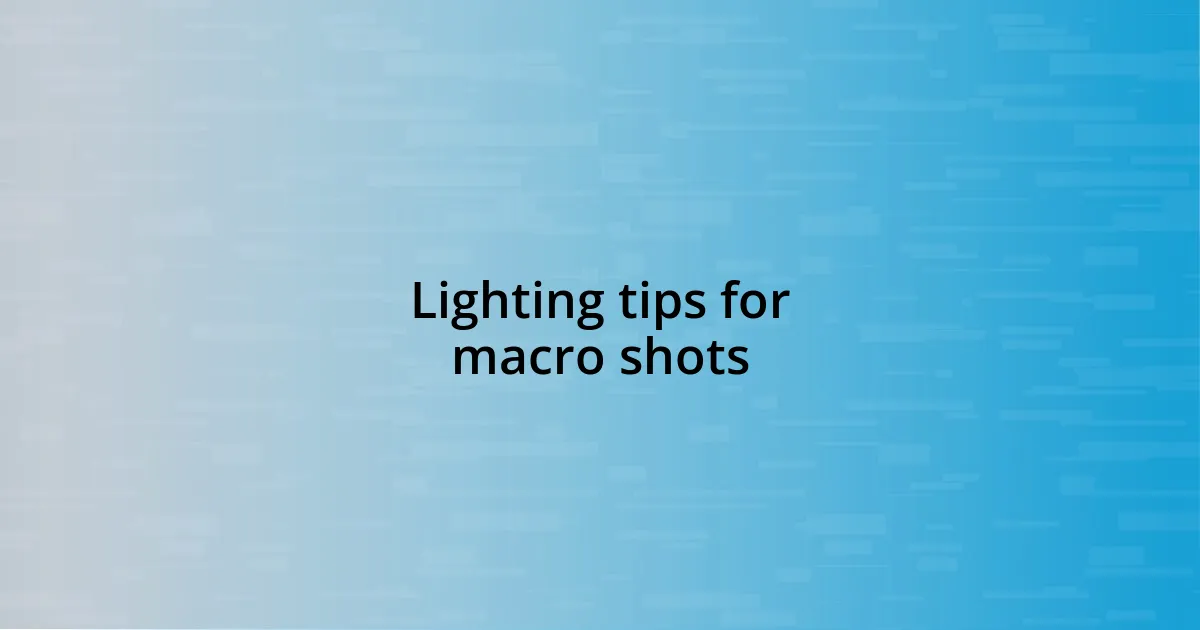
Lighting tips for macro shots
When it comes to lighting for macro photography, I’ve found that using natural light can work wonders. I remember one afternoon spent chasing golden hour light through my garden. The soft, diffused glow made the colors of the petals come alive, and the delicate shadows created depth that simply couldn’t be replicated with harsh light. Have you tried shooting at different times of the day? You might be surprised by how dramatically the results can change!
Artificial lighting has also been a game-changer for me. During a particularly rainy day, I turned to my LED panel lights to illuminate a spider’s web I had set up indoors. It was fascinating to see how the added light played off the droplets, transforming an everyday subject into an ethereal masterpiece. I urge you to experiment with light modifiers like diffusers or reflectors. They soften and bounce light, ensuring that even the tiniest details stand out without overwhelming glare.
Finally, I can’t stress enough the importance of adjusting your light source’s angle. There was a time when I simply set up my lights and hoped for the best—a big mistake! Now, I tilt my lights to create shadows that add dimension and intrigue to my macro shots. It’s like painting with light, enhancing textures and making surfaces pop. Have you felt that moment when everything clicks into place during a shoot? It takes patience and practice, but the payoff is well worth it!
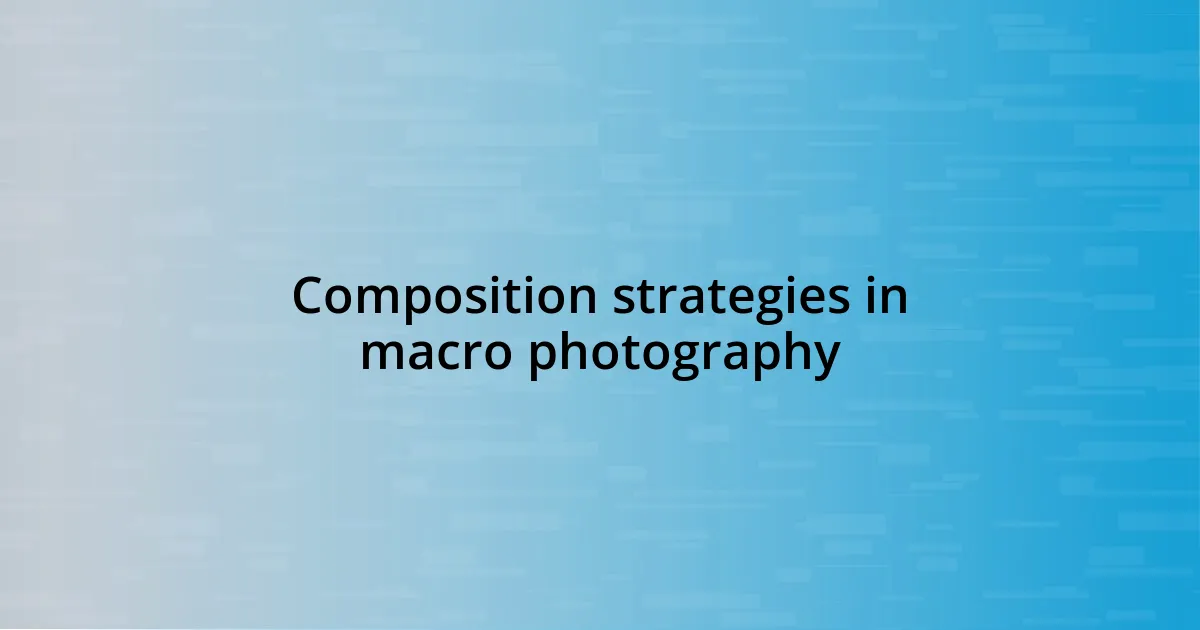
Composition strategies in macro photography
Composition in macro photography offers a fascinating playground for creativity. One strategy I’ve come to appreciate is the rule of thirds, which often helps me place my subject in a more dynamic position within the frame. I still remember snapping a photo of a dewdrop clinging to a leaf, and by aligning it off-center, the composition created a leading line that drew the viewer’s eye right to that delicate drop. Have you tried this technique? It can dramatically elevate the visual interest of your shots.
Another essential element I’ve played with is framing. Sometimes, I’ll use natural elements like branches or flowers to encase my subject, adding layers to my images. During one outing in a local park, I found a perfect set of vibrant flowers that framed a resting butterfly. It felt like I had stumbled upon a hidden gem in nature, and the result was a photograph that truly captured that moment. When you incorporate framing into your composition, it can create a sense of depth and context, making the scene more immersive.
Finally, negative space plays a pivotal role in macro photography. Initially, I found it challenging to embrace the idea of leaving parts of the frame empty. But I’ve discovered that giving your subject room to breathe can elevate the photo’s impact significantly. I recall capturing a lone bee hovering near a flower against an expansive out-of-focus background. This approach made the tiny busy creature more prominent, emphasizing its importance in the frame. Have you considered how negative space could change your mood or interpretation of an image? It’s worth exploring!

Common mistakes to avoid
When diving into macro photography, one mistake I often made was neglecting my focus settings. I can’t count how many times I shot a beautiful insect only to realize later that it was slightly out of focus. Have you ever experienced that gut-wrenching moment when you realize the magic shot is a blur? Trust me, taking the time to use manual focus or focus stacking can save you from heartbreak. Precision matters, especially when capturing intricacies that the naked eye often misses.
Another common pitfall I’ve encountered is underestimating the depth of field. In my early days, I thought a wide aperture was always my best friend, but it often left too little in focus. I remember being excited about photographing a blooming flower, only to find that only a sliver of it was sharp. This experience taught me the importance of experimenting with aperture settings to find the right balance. Have you ever wished for a certain part of your image to be in focus, only to be disappointed? Learning to control depth of field elegantly can transform your macro shots, allowing you to guide the viewer’s gaze exactly where you want it.
Lastly, I must mention the risk of overcomplicating setups. Early on, I had a tendency to crowd my images with props and gadgets, believing they would enhance my shots. One time, I surrounded a tiny frog with leaves and flowers, but the clutter distracted from the subject itself. It’s easy to get caught up in the details, but simplifying my scene has taught me that sometimes less is more. Have you found beauty in simplicity? Embracing minimalism in composition not only highlights your subject but also adds a timeless quality to your photography.

Post-processing tips for macro images
Post-processing macro images can truly elevate their impact. When I first started, I was amazed at how much a little tweaking could enhance colors and contrast. One memorable instance was when I edited a close-up shot of a dragonfly. By adjusting the vibrancy, I revealed stunning iridescent hues that were almost hidden in the original. Have you ever noticed how some images seem flat until a splash of color brings them to life? It’s a game-changer.
Another area I’ve grown to love is sharpening details. A few simple clicks in the editing software can make every tiny hair and vein on an insect pop. I remember working on a photo of a ladybug resting on a leaf, and by focusing on sharpening, I created a sense of texture that drew the viewer in. Isn’t it incredible how detail can spark curiosity? I’ve found that being mindful of how I enhance sharpness can turn an ordinary shot into something extraordinary.
Finally, don’t underestimate the power of cropping. Initially, I hesitated to crop my images, fearing I’d lose essential aspects. But then, I took a chance while working on an image of a blooming cactus flower, trimming it to sharpen focus on the bloom itself. It revealed a stunning burst of color against a clean background, making the flower truly the centerpiece. Have you tried experimenting with cropping in your photos? You might discover new perspectives that you hadn’t considered!





